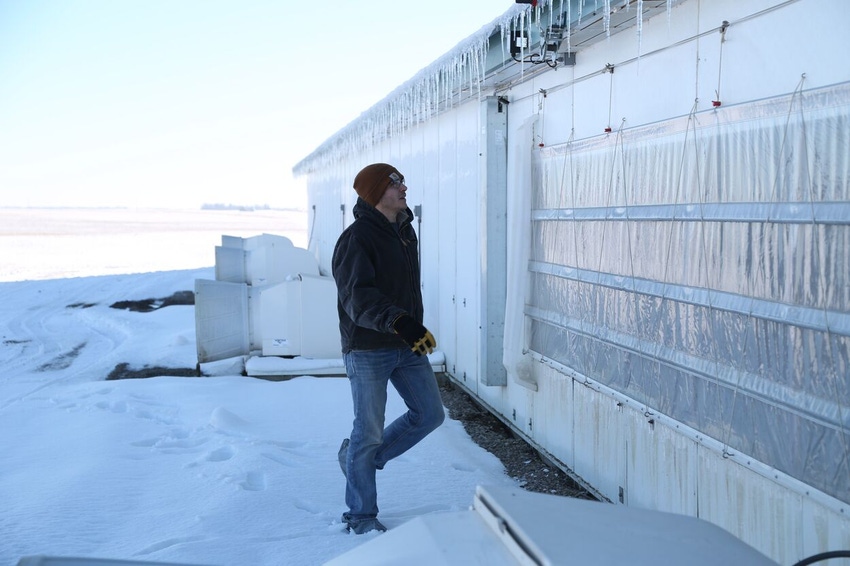Keeping an ideal environment inside the barn
Barn heat loss can be minimized by insulating curtains and higher-stage fans, avoiding over ventilation, and reducing heat dissipation.
November 21, 2023

By Lindsay Miller, Swine Vet Center
For the upper Midwest, the season has changed, and cold weather is here. Lack of barn preparation can be costly. Are your barns ready?
As we move into colder times of the year, we switch from heat removal in barns to heat conservation. There are multiple things that can be done to reduce heat loss in barns including the addition of bubble-wrap or plastic over curtains, covering higher-stage fans (this can be done at the shutter as well as a sock over the cone to reduce backdraft into the barn). Cool cell curtains should be inspected to ensure curtains can be closed and bubble wrap or plastic can be added to limit draft into the barn.
When adding these draft barriers, make sure that you aren’t covering emergency drops for ventilation failure. Other opportunities for barns include closing gaps between the curtain and the wall, holes in the curtain, and doorway thresholds.
As always, a warm and dry environment is the goal for the barn. One of the most significant areas of barn heat loss is through over ventilation. The younger the pig, the more important it is to make sure the correct number of cubic feet per minute per pig are being pulled through the barn.
A wean pig being placed in the winter will need 1-2 CFM, see the reference chart below to calculate how many CFMs/pig your pigs require. For example, a 2,400 head barn holding 13 lbs. wean pigs, should run at 3600 CFM. To maintain 3600 CFM for minimum ventilation, one 24” variable fan can be run at 60%.
Strobel
The air speed entering the barn from the inlets required to allow proper mixing of cool outside air with barn air is approximately 800 ft/min. A practical measurement of airspeed can be done by standing 8-10ft from the inlet. If you can feel air at your face, air speed is within the desired range. If the air blows past you, over your head, the air speed is too fast. If the air drops before reaching you, the air speed is too slow.
For a more accurate measurement, airspeed meters are a good low-cost tool that can be utilized. You can reduce air speed by either opening the inlet further, creating less resistance for the air to travel through, or by reducing minimum fan percentage. To increase air speed, you can tighten inlets or increase the minimum fan percentage.
To avoid excess heat loss, heaters should be set to turn on at a point so that it doesn’t get too cool for pigs and turn off soon enough so that it doesn’t drift past setpoint. When a heater shuts off, the heat produced takes time to stabilize through the barn and reach and recalibrate temperature probes. This also avoids instantly dissipating the produced heat through ventilation. An example would be to have heaters set to turn on at 3 degrees below set point, then turn off at 2 degrees below set point.
Expanding minimum fan stage bandwidths can also help decrease the loss of heat. Increasing ramping bandwidth on variable fans from a 0.5-1.0 degree to a 1.5-2.0 degree bandwidth enables you to take full advantage of the propane produced heat.
Strobel
Over ventilation in a non-winterized barn can cost up to $0.11/pig per day in LP compared to a winterized barn running with the proper minimum ventilation CFMs/head, that’s approximately $264 per day in a 2,400 head barn.
Winter brings many challenges, but with preparation and proper set up, those challenges can be minimized. Barn heat loss can be minimized by insulating curtains and higher-stage fans, avoiding over ventilation, and reducing heat dissipation. These steps along with good husbandry and animal care, you can create the ideal environment for pigs, even when the weather outside is far from desirable.
You May Also Like



